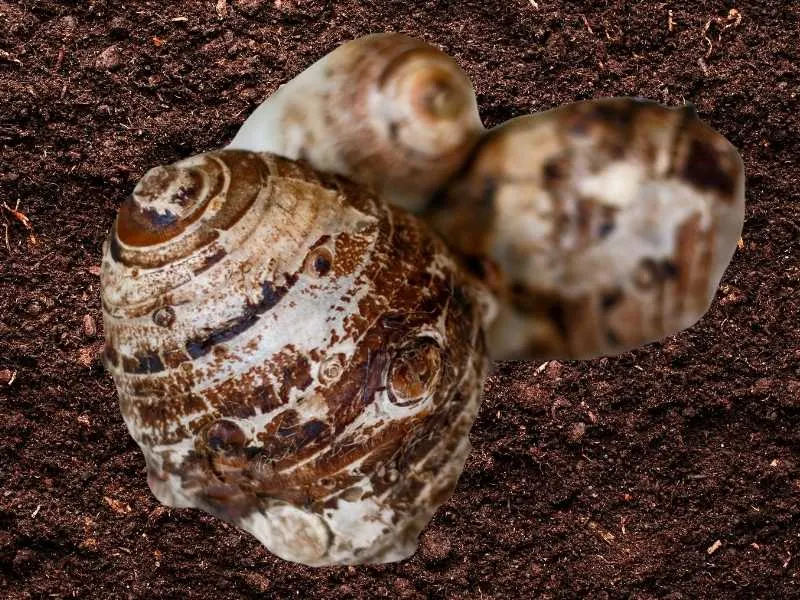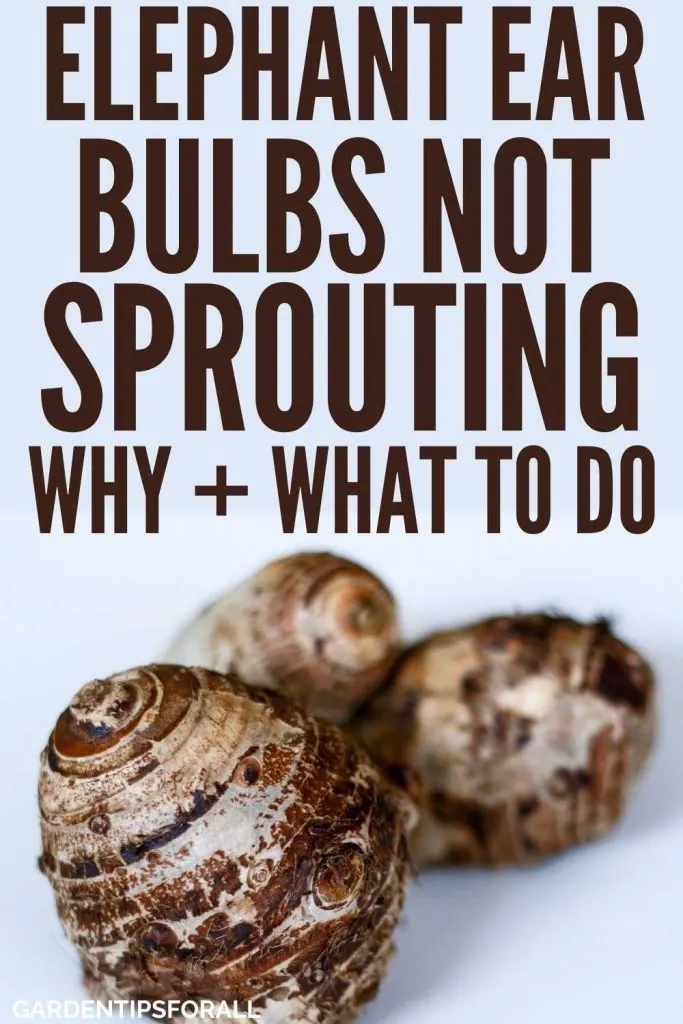Elephant Ear Bulbs Not Growing – Why and What to Do About It
Elephant ears are impressive plants, coveted for their dramatic foliage. The bulbs could take their time sprouting. It depends entirely on when they are planted, where they are planted, care routines and environmental conditions.
It could take more than a month before you notice signs of sprouting. The soil must become completely warm before the buds start to emerge.
You have done all the hard work. You have planted the elephant ears in the garden, and now you are counting the weeks before they start sprouting. But the wait seems to be going on forever.
You see no signs of any activity, and I don’t blame you if you are starting to get a little impatient!
You may be wondering what exactly is happening and why your elephant ears are not sprouting.
Your elephant ears bulbs not sprouting could be because they were rotting all the time you were waiting! Soil temperature and adequate light are important factors that determine how well your elephant ear bulbs sprout. If the soil temperature is too cool, they will be reluctant to start sprouting.

Let’s take a deeper look into how long it could take for your elephant ear bulbs to sprout and what can be done if they show no sign of coming up.
Related Articles:
- Elephant Ear Plant Drooping – 8 Reasons and Solutions
- Elephant Ears Turning Yellow – 8 Reasons and Solutions
- Do Elephant Ears Come Back Every Year?
- 15 Types of Alocasia Elephant Ear Plants
How Long Does it Take for Elephant Ear Bulbs to Sprout?
You should ideally wait for a month before expecting your first sprout. If you see no sign of sprouting even after one month has passed, you should carefully dig up the bulb and inspect it for rotting.
If there are any bad spots, you should cut them off. You can plant it again and see how they turn up this time around.
Elephant ears that are newly planted close to the soil surface generally take only a few weeks to sprout the first set of leaves.
The application of a proper fertilizer of 20-20-20 blend every two weeks can greatly speed up the growth process.
There are different genera of plants collectively called elephant ears. These include Alocasia, Colocasia, caladium and Xanthosoma. You should know about the typical growth of the different elephant ear plant varieties so that you know just exactly what to expect.
- Alocasia: Hardy in the USDA zones 9 to 11, Alocasia plants will start to sprout in around 3 to 8 weeks, provided they are watered very well. These plants will be dormant for a few months between the growing cycles during which they will shed leaves. Come the warm season, and they will start growing fast again.
- Colocasia: Hardy in the USDA zones 9 to 11, Colocasia plants will show signs of top growth as early as three weeks if supplied with ample amounts of water. You can expect tail growth in around 8 weeks. They will keep growing through the spring and summer seasons.
- Caladium: Winter hardy in the USDA zones 9 to 11. They are grown as annuals in zones 3 to 8. Caladiums can take between 2-12 weeks to sprout.
- Xanthosoma: Hardy in the USDA zones 8 to 10, it is a fast-growing variety that can reach a full growth stage in around 3 to 5 months.
Elephant Ear Bulbs Not Sprouting – What Should You Do When You See No Sprouts?
If it is your first time growing elephant ears, you may be wondering how long you should wait before you notice the first signs of sprout. Ideally, you should wait for a month. This is how much time it will take for the first shoots to poke their way through the soil.
The length of time it takes for sprouts to appear depends on two factors:
- Air temperature
- Soil temperature
Cool weather will considerably slow down the growth of your plant. Elephant plant ears need warm soil to sprout, so you can consider using heat mats. These will warm the soil gently and promote not only faster sprouting but also healthy bulbs too.
Once you plant the bulbs, your elephant ears will take the first three weeks to grow roots. Only after this happens, will you see some activity above the ground.
If you see no signs of sprouting, the bulbs could have been damaged beyond repair. You should dig up the plant and check for any sign of life. If the bulb is all soft and mushy, then you should throw it away.
Your Elephant Ear Bulbs were Rotting Instead than Rooting!
Unfortunately, you have no other option but to throw away the bulb. You should pull the bulb out of the soil, wrap it in a bag, and throw it away.
It could be a fungus, virus or pest infestation that stopped the growth of your bulb in its tracks.
You must spray the area with an anti-fungal spray to prepare the soil to receive a new elephant ear plant.
Tips for Planting and Caring for Elephant Ear Bulbs
- You should plant the elephant ears in rich soil that drains well so that the soil doesn’t become waterlogged.
- Prepare the soil for planting by adding compost or topsoil. This will ensure it receives the required amount of nutrients. This will enhance the soil’s capacity to hold water.
- If you want your elephant ears to grow to their full potential, you have to provide consistent moisture in the summer. Applying a liquid fertilizer every two weeks could be beneficial for their growth.
- Moreover, elephant ears will respond well if you amend the soil with organic material. Compost will provide your soil with enough nutrients and the proper pH.
- When you plant elephant ear bulbs in the springtime, they can grow to big, impressive sizes and reach a maturity stage in a matter of months.
My Elephant Ear Bulb Not Growing – Final Thoughts
Elephant ears are large bulbs and may take their time to sprout. They are fantastic USDA zones 10 through 11 plants. In these zones, elephant ears are evergreen.
In zones 8 through 9, they die (remain dormant in the ground) and return in spring once the soil temperature is all nice and warm.
Wait until the soil temperature is at least 65 degrees Fahrenheit before you plant your elephant ears.
Daytime temperatures in the range of 70 and 85 degrees Fahrenheit are perfect conditions to plant your bulbs as the danger of frosting is out of the picture.
You can speed up the growth process by planting your bulbs in a pot indoors for some weeks before early spring. Once the conditions are warm, you can transfer them to your garden, patio or backyard.

